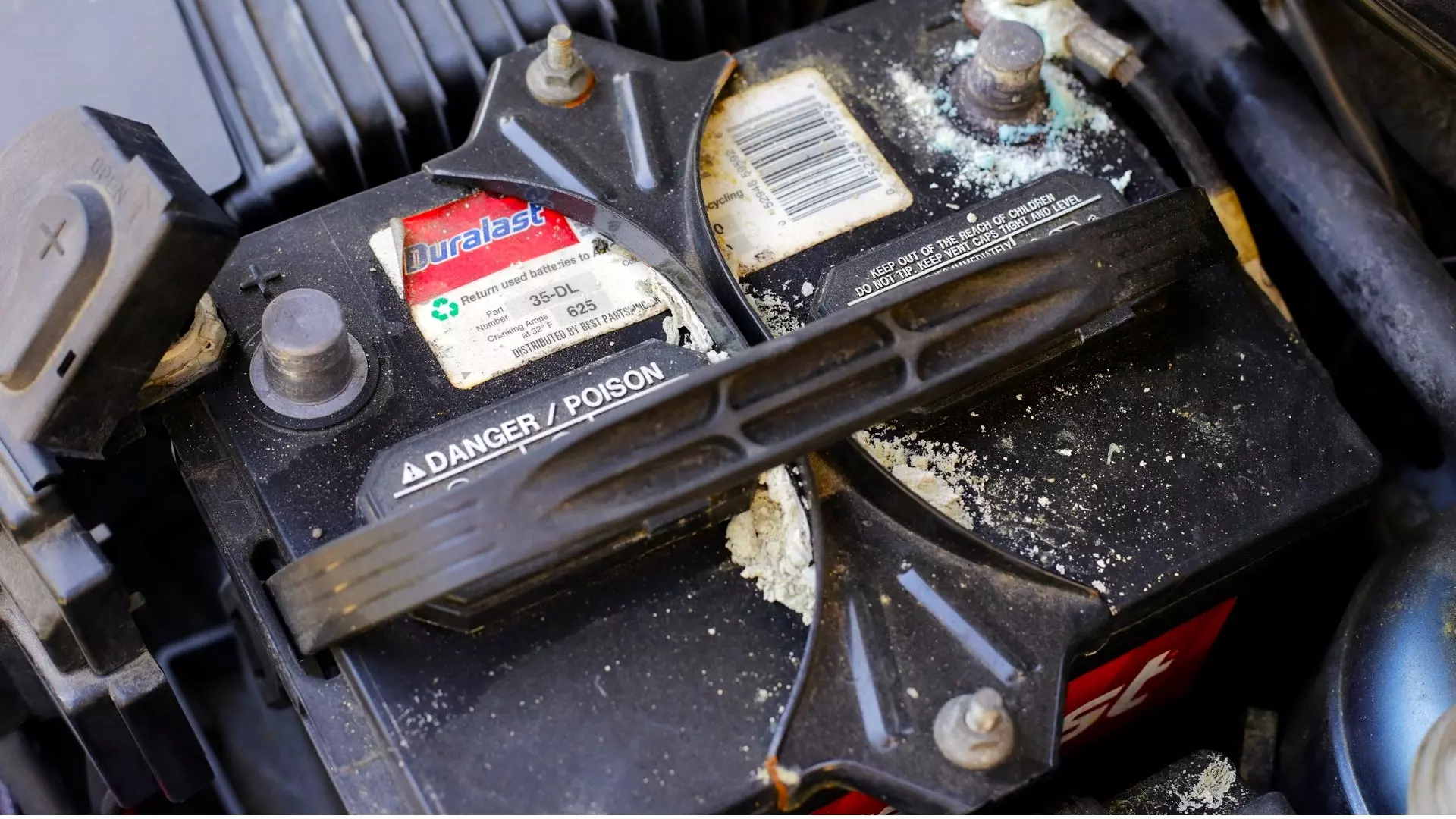Time Needed: 30 minutes, Difficulty: Easy, Cost: Less than $20
Cleaning the corrosion off of the 12-volt battery that sits in your car is often an overlooked part of automotive maintenance. Typically, when people think of car batteries, they only take notice when it’s time to replace them, which is typically every three to four years (your mileage may vary). However, just like other bits under the hood that need to be cleaned, like spark plugs, air filters, and engine oil, so do the battery’s terminals.
Over time, everyday lead-acid car batteries have corrosive build-up on their positive and negative terminals. It’s a dry, powdery substance that’s mainly composed of what’s in the battery: acid. This is normal, as while batteries age and temperatures under the hood increase and decrease, a tiny bit of acid gas escapes over time. This might seem bad, but it’s actually normal.
To maintain as efficient of a flow of electricity from the battery as possible, as well as ensure the battery lasts as long as possible, it’s important to keep the terminals and attaching cables clean. More efficiency means, well, more efficiency. The battery will charge properly, and the car will start up and run easier. Plus, too much acid buildup can damage surrounding components if left unchecked.
So let’s discuss how to keep those terminals clean with something as effective, cheap, and simple as Mother Nature’s most versatile concoction: baking soda!
The Safety Brief
To ensure your skin stays unblemished, you’ll want to be prepared for cleaning car battery corrosion. Do this maintenance in a well-ventilated area or outside and use safety goggles and sturdy gloves (do not use regular cloth work gloves). The baking soda will effectively neutralize the acid, making it far less caustic, but you still don’t want to put your bare hands on it. Or get it in your eyes while scrubbing, that would be terrible. Furthermore, make sure children and animals stay away.
One last note: It’s good practice to only touch one battery terminal at a time.
The Tools & Parts You Need
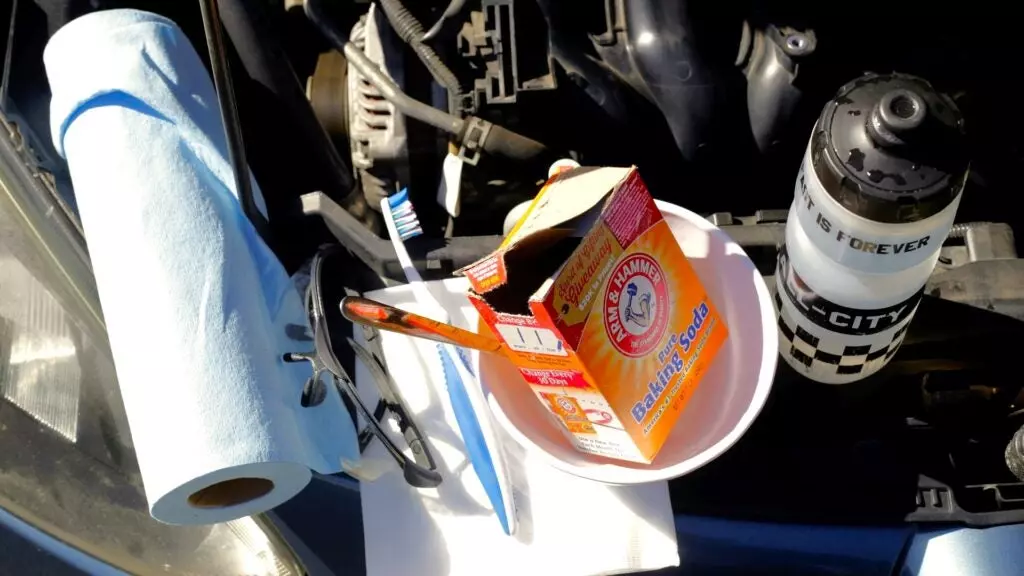
This might be one of least expensive maintenance jobs you can do under your car’s hood. To clean off battery corrosion, all you need is baking soda, a scrubbing pad, paper towels, a bowl, a spoon, adjustable wrench or ratcheting wrench and socket, and the aforementioned safety goggles and gloves. This could also be a great opportunity to give an old toothbrush a new lease on life for scrubbing duty. Just don’t use it for your teeth afterwards.
Oftentimes, people have the first five stowed away in their kitchen. If not, a quick run to the store or perusal online can get them in your possession faster than you can say sulfuric acid.
The Task: How To Clean Battery Corrosion
Follow these steps, and you’ll have clean battery terminals in no time.
1. Pop your hood.
First, be sure your car is turned off, and it’s not a bad idea to let it cool down. Open the hood and locate where the battery is and remove any plastic caps.
2. Remove the negative cable, then the positive cable.
This is important: Remove the negative first, then when you’re done, reattach it last. If you’re not sure which is which, the positive will typically be red and have a plus (+) sign, while the negative will typically be black with a negative (-) sign. Usually these are fastened on via a 10-mm nut, so having a 10-mm socket and ratcheting wrench makes the job nice and easy, otherwise a small adjustable wrench can do the trick just fine.
Important: Be sure to keep the battery cables well away from each other, and make sure the positive cable doesn’t touch anything metallic under the hood. An easy way to do this is wrapping it in a spare rag.
3. Observe how much corrosion there is.
You might be able to get away with lightly cleaning the terminals and cables, otherwise you might have to do more cleaning.
4. Mix up your baking soda.
On a table or on the ground, grab your bowl and utensils and prepare to make your baking soda mixture. Simply add water and mix with the spoon until it’s a goopy paste. It’s OK to mix up too much, baking soda’s cheap!
5. Lightly dab some baking soda on the battery terminals and any other corrosion-covered components.
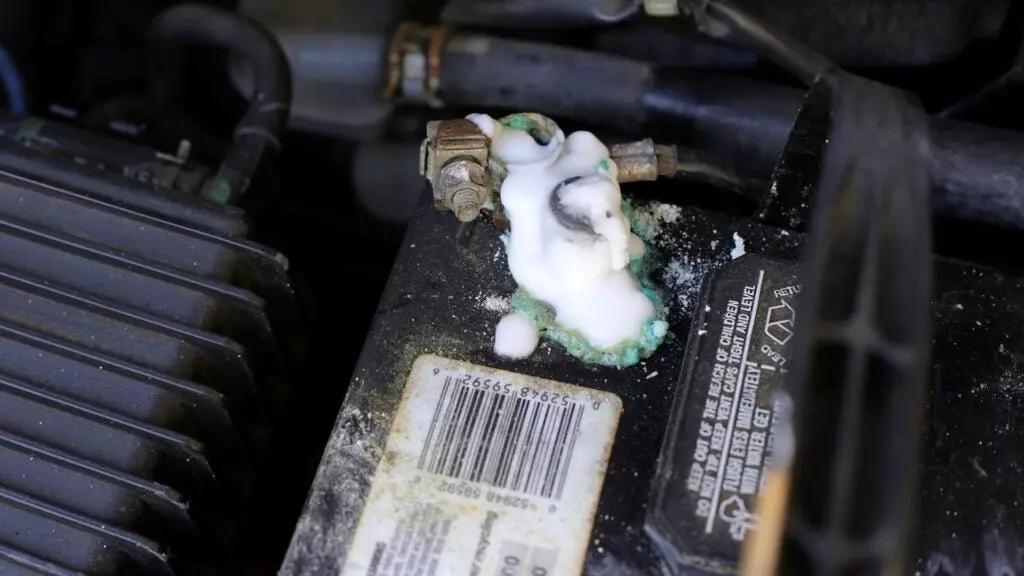
You might hear it sizzle and crackle, that’s the sound of the acid being based-out, or neutralizing. Baking soda is basic, while acid is, well, acidic. Adding baking soda brings the acidity down, making it not only easy to clean, but also less caustic to any potential skin contact. If you’re like this owner, there was some heavy acid buildup, and once the baking soda was added, it actually solidified into an easy-to-wipe-off glob.
6. Wipe, scrub, and rinse.
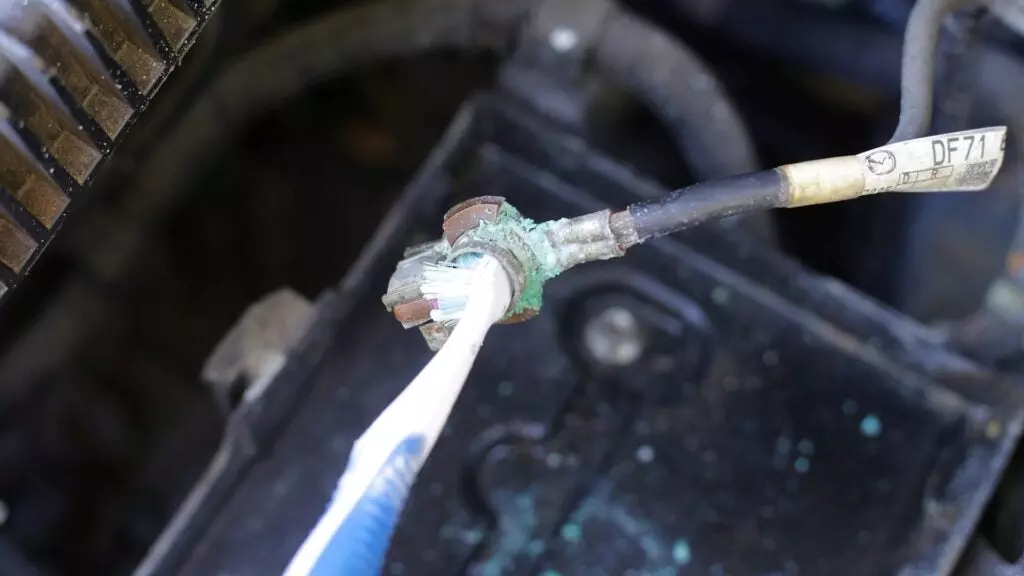
Wipe off any globs with paper towels, then dab a little more baking soda and scrub the terminals, metallic bits of cables, and anything else that had corrosion on it. Then rinse them off, and feel free to continue cleaning.
It’s a good idea to clean all components until they’re nice and metallic again. However, if maintenance has been overlooked, such as in this motorist’s case, it might be impossible to restore a nice metallic sheen to the cables. That’s OK, they’ll still work just fine, just get them as clean as you can.
7. Clean the battery tray.
To go one step further, you can even remove the battery and clean off its tray. Lots of crud accumulates on battery trays, and combined with hints of battery acid means they can rust. This motorist did this to not only adequately and easily clean off the battery, but to also clean off its tray. Just be sure to reinstall in the right orientation so the right cable goes to the right terminal.
8. Reconnect the battery.
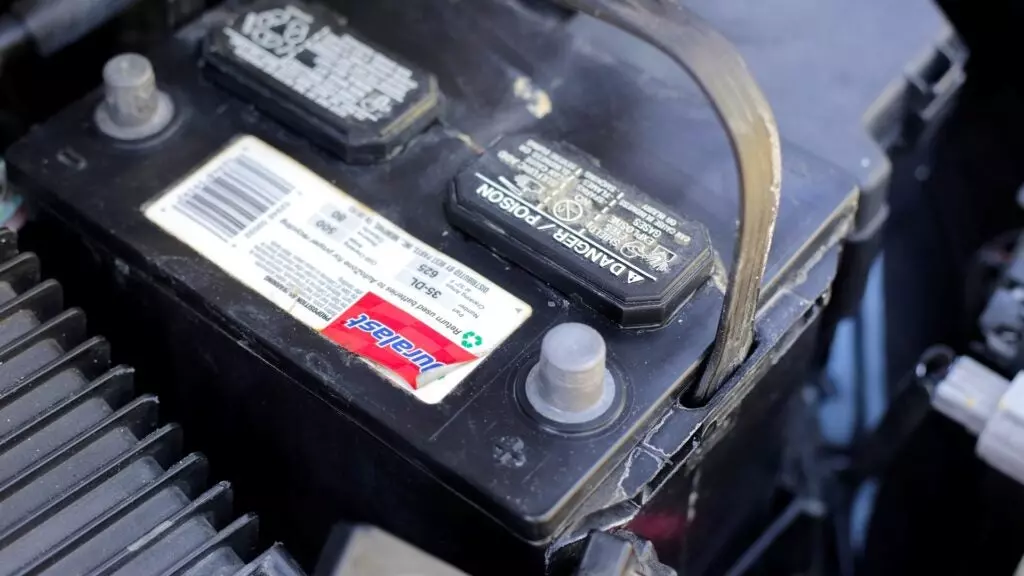
Give the terminals an extra scrub with a brillo pad to make them a tad shiner. Then, gently rinse everything with water, making sure not to splash water all over. Dry everything off with a towel, then begin reinstallation. This is simple: Reattach the positive battery cable and tighten it down, then reattach the negative battery cable and tighten it down. If you removed the battery strap to make room or to clean it off, re-attach that as well.
Finally, rubbing a very light coat of vaseline on the terminals can help stave off corrosive accumulation. However, some people also point out that the vaseline could collect extra dirt, so it’s up to you.
FAQs About How To Clean Car Battery Corrosion
Q: What is the best way to clean car battery terminals?
A: We will always use the cheap and easy method detailed above, but you could also use specific battery cleaners to get the job done.
One reason why we enjoy our method is it prevents back spray: aerosol products can blast acidic material all over the place if you’re not careful. Plus, baking soda is more environmentally friendly due to its neutralizing qualities.
Q: Does battery corrosion mean that the battery is bad?
A: No, it’s a normal occurrence on top of common car batteries. However, letting it build up will shorten the battery’s life and could damage other components.
Q: Can my car battery electrocute me?
A: No.
Q: Can cleaning my battery damage it?
A: It’s important to not be too rough on connections by doing everything gently. If the car is older, too much twisting and force could break the positive or negative cables, which would require you to tow it to a shop to be properly repaired.
Q: Can corrosion drain a car battery?
A: In effect, yes, primarily because it could interrupt the connection between the battery terminal and the battery cable, which could prevent the battery from charging properly. It can also shorten the battery’s life if not regularly cleaned off.
Q: Can you use WD-40 on car battery terminals?
A: No. It’s better to use baking soda, or a specific solution meant for it.
Watch This Video Tutorial To Learn More About Cleaning Battery Corrosion
We understand that watching a video can be quicker and easier than reading an entire article, so if you’re short on time, just watch this clip. It should tell you everything you need to know.
Disclosure: Carbibles.com is also a participant in the Amazon Services LLC Associate Programs, an affiliate advertising program designed to provide a means for sites to earn advertising fees by advertising and linking to Amazon.com. Pages on this site may include affiliate links to Amazon and its affiliate sites on which the owner of this website will make a referral commission.
